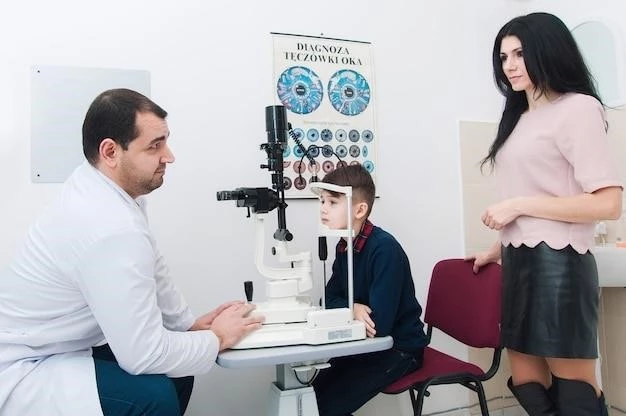Introduction
Ophthalmo-acromelic syndrome is a rare genetic disorder affecting the eyes, hands, and feet. It is caused by mutations in the SMOC1 gene and leads to significant ocular and skeletal abnormalities.
Overview of Ophthalmo-Acromelic Syndrome
Ophthalmo-acromelic syndrome is a rare genetic disorder characterized by malformations of the eyes, hands, and feet present from birth. Mutations in the SMOC1 gene lead to this condition, resulting in ocular and skeletal abnormalities. The syndrome includes features such as anophthalmia and microphthalmia, as well as limb deformities like synostosis and oligodactyly; Research has identified genetic changes in the SMOC1 gene as the primary cause of OAS, leading to a better understanding of this condition.
Causes and Genetic Background
Ophthalmo-acromelic syndrome is primarily caused by mutations in the SMOC1 gene. These mutations result in malformations of the eyes, hands, and feet, leading to significant ocular and skeletal abnormalities.
SMOC1 Gene Mutations
At least 12 mutations in the SMOC1 gene have been identified to cause Ophthalmo-acromelic syndrome, a rare genetic disorder characterized by malformations of the eyes, hands, and feet. These mutations may lead to nonfunctional SMOC-1 protein, disrupting growth factor signaling and affecting normal development.
Symptoms and Clinical Presentation
Ophthalmo-acromelic syndrome manifests as malformations of the eyes, hands, and feet. Eye abnormalities range from absence or underdevelopment to limb deformities such as synostosis and oligodactyly.
Ocular and Skeletal Abnormalities
Ophthalmo-acromelic syndrome, a rare autosomal recessive disorder, presents with ocular abnormalities like anophthalmia and microphthalmia, alongside skeletal malformations such as short 5th finger٫ synostosis of metacarpals٫ and oligodactyly in the feet. These abnormalities are key features of this genetic condition and contribute to its distinct clinical presentation.

Diagnosis and Testing
Diagnosis of Ophthalmo-acromelic syndrome involves genetic testing, specifically Next Generation Sequencing to identify mutations in the SMOC1 gene, confirming the presence of this rare genetic disorder.
Next Generation Sequencing Test for OAS
The Next Generation Sequencing (NGS) test is vital for diagnosing Ophthalmo-acromelic syndrome as it can detect sequence variants and copy number variants within the SMOC1 gene with high sensitivity, enabling accurate identification of genetic mutations associated with this rare condition.

Treatment and Management
Management of Ophthalmo-acromelic syndrome involves a multidisciplinary approach to address both ocular and skeletal abnormalities. Treatment focuses on supportive care, vision aids, and surgical interventions to improve quality of life for affected individuals.
Support Organizations and Advocacy Groups
Community groups and support organizations play a vital role in providing assistance and information to individuals and families affected by Ophthalmo-acromelic syndrome. These groups offer support, guidance, and resources to navigate the challenges associated with this rare genetic disorder, ensuring access to the needed support and understanding for affected individuals.
Research and Findings
Studies have identified genetic changes in the SMOC1 gene as the primary cause of Ophthalmo-acromelic syndrome, shedding light on the pathogenesis of this rare genetic disorder. Understanding these mutations is crucial for advancing diagnostic and treatment approaches for affected individuals.
Specialists in Ophthalmo-Acromelic Syndrome
Experts specializing in Ophthalmo-Acromelic Syndrome have conducted research, received grants, written articles, and participated in clinical trials related to this rare genetic disorder. These specialists possess in-depth knowledge and expertise in managing and understanding the complexities of the syndrome.
Research on Ophthalmo-acromelic syndrome has advanced understanding of genetic mutations in the SMOC1 gene٫ providing insights for diagnostic and therapeutic developments. Continued study is crucial for improving outcomes for individuals with this rare genetic disorder.
Current Understanding and Future Directions
As ongoing research reveals more about the genetic underpinnings of Ophthalmo-acromelic syndrome, future directions aim to enhance diagnostic precision, explore innovative treatment modalities, and provide individuals with this rare disorder improved support and management options. Continued investigation into the SMOC1 gene mutations offers promising avenues for advancements in understanding and addressing this condition.
